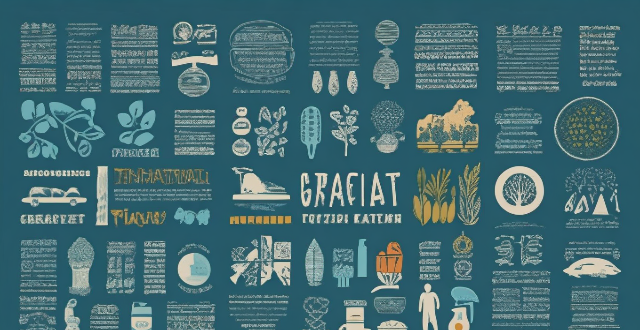The text provides an overview of the impacts of climate change on various aspects of agriculture, including temperature variations, precipitation patterns, water resources, pests and diseases, soil health, livestock management, food security, and mitigation and adaptation strategies. It highlights the challenges faced by farmers and policymakers in addressing these impacts and emphasizes the need for immediate attention and adaptation strategies to ensure future food security and sustainability.

Impact of Climate Change on Agriculture
Climate change has profound effects on agriculture, a sector that is heavily dependent on environmental conditions. The following are detailed impacts of climate change on various aspects of agriculture:
Temperature Variations
- Extreme Weather Events: More frequent and severe weather events like heatwaves, cold snaps, and droughts can damage crops and livestock.
- Altered Crop Cycles: Warmer temperatures can lead to earlier planting seasons and altered harvest times, which may not align with traditional farming practices.
Precipitation Patterns
- Changes in Rainfall: Increased rainfall can cause flooding, leading to crop loss and soil erosion. Decreased rainfall results in water scarcity for irrigation.
- Unpredictable Weather: Unpredictable patterns make it difficult to plan and manage crop rotations and planting schedules effectively.
Water Resources
- Droughts: Longer and more frequent droughts reduce the availability of water for irrigation, affecting crop yields.
- Rising Sea Levels: In coastal areas, rising sea levels can contaminate freshwater supplies used for agriculture.
Pests and Diseases
- Spread of Pests: Warmer temperatures can expand the range of pests and diseases, introducing new threats to crops.
- Increased Pest Activity: Higher temperatures can accelerate the life cycles of pests, increasing their population and damage to crops.
Soil Health
- Erosion: Extreme weather events can exacerbate soil erosion, reducing land's productivity.
- Nutrient Loss: Heavy rainfall can lead to nutrient leaching from the soil, decreasing its fertility.
Livestock Management
- Heat Stress: Animals, especially those in intensive farming systems, can suffer from heat stress, affecting their health and productivity.
- Water Needs: Livestock require more water during hotter periods, increasing the demand for already scarce water resources.
Food Security
- Reduced Yields: All these factors contribute to reduced agricultural yields, affecting food security globally.
- Price Fluctuations: Scarcity of certain crops can lead to price fluctuations, making food less affordable for some populations.
Mitigation and Adaptation Strategies
To address the impacts of climate change on agriculture, farmers and policymakers are adopting various strategies:
- Sustainable Practices: Using techniques like conservation tillage, cover cropping, and crop rotation to improve soil health and water management.
- Crop Diversification: Planting a variety of crops to mitigate risks associated with changing weather patterns.
- Breeding Resilient Varieties: Developing crop varieties that are more resistant to pests and can tolerate extreme weather conditions.
- Water Management: Improving irrigation systems for efficient water use and implementing rainwater harvesting techniques.
In conclusion, climate change presents significant challenges for agriculture that require immediate attention and adaptation strategies to ensure future food security and sustainability.